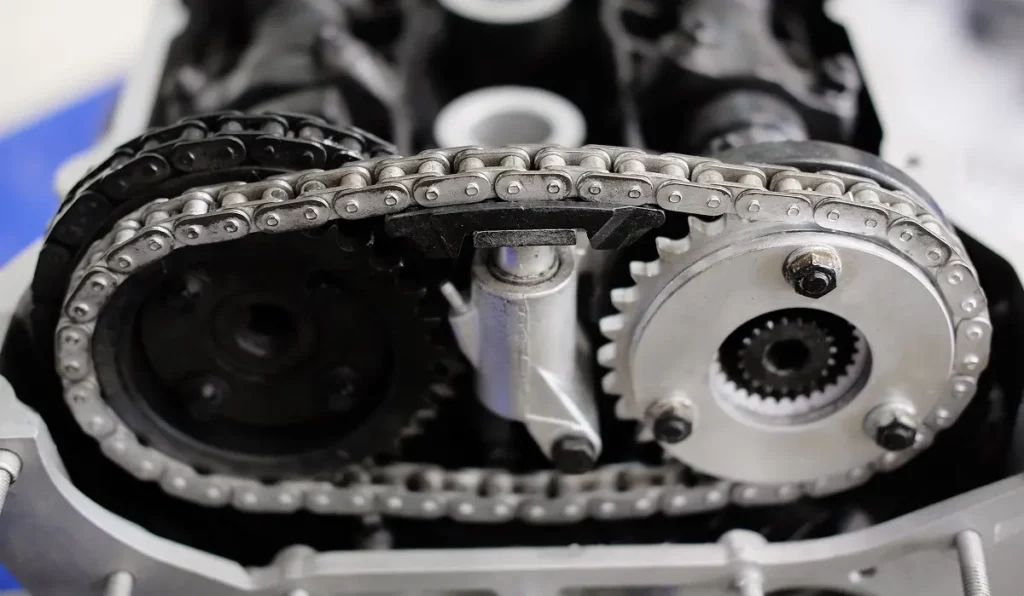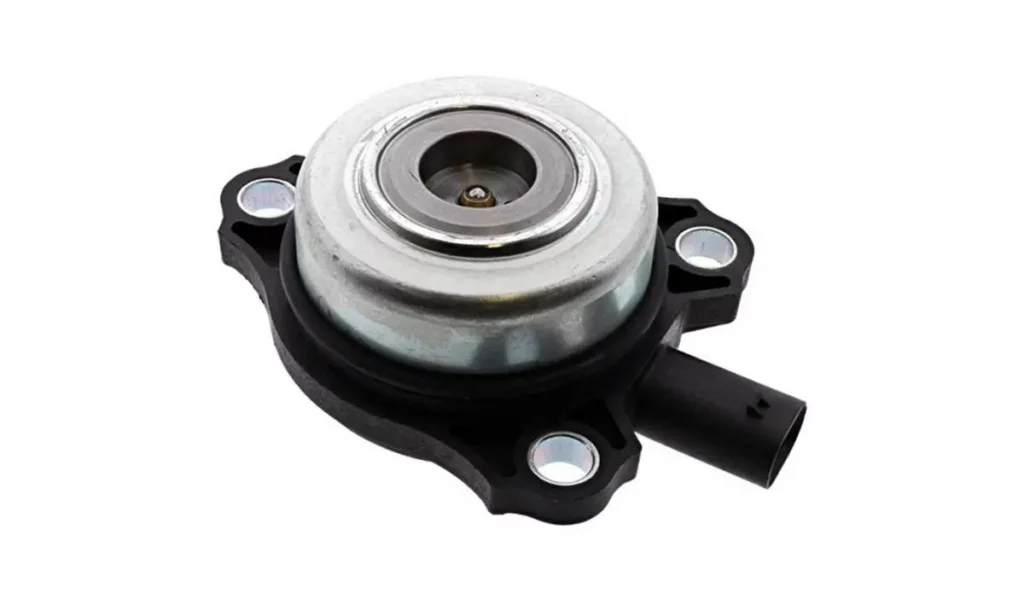Modern cars are built for efficiency. Everything in your vehicle is optimized to the best of the manufacturer’s ability in order to extract more performance from the system, all while keeping the costs down. Variable valve timing was introduced to give engines more flexibility. With this system, the ECU can adjust the power delivery of the engine according to its present needs.
The P0026 check engine light code is associated with the variable valve timing solenoid on the intake side. This code indicates an issue with this solenoid, which can and most likely will impact your car’s performance. Here’s what causes the P0026 code, what symptoms to look out for, and how to potentially fix this problem at home.

What Does P0026 Code Mean?
The P0026 code is defined as Intake Valve Control Solenoid Circuit Range/ Performance (Bank 1). Your car has variable valve timing devices on the intake and exhaust camshafts. Their job is to work in sync.
The Intake VVT has to follow what the exhaust VVT is doing, and vice versa. When you get the P0026 code, that means that your intake VVT solenoid, a device that triggers VVT on the intake side, is either taking way too long to engage, or isn’t engaging at all.
What Causes the P0026 Code?
For the most part, the main causes related to this DTC are all linked to the VVT intake solenoid. One way or another, this component is causing your intake valves to behave in a way contrary to what your ECU needs at any given moment. As such, these are the main causes of P0026:
- Intake VVT solenoid failure
- Intake VVT solenoid harness issues
- Oil level low
- ECU issues (rare)
Intake VVT Solenoid Failure
In most cases, VVT solenoids use power from the charging system to open a set of valves that allow oil to get into the VVT system. This in turn activates the VVT, allowing the engine to achieve full efficiency.
There are several reasons why VVT solenoids fail. Being an electric-powered component, there is always a chance that the electrical side of the equation simply fails. On the other hand, the solenoid body can wear out over time due to all kinds of reasons.
One of the most common contributing factors to VVT solenoid failure is old, worn-out oil. If you look at your average VVT solenoid, you’ll find that it has tiny little oil passageways where the oil is let through.
When oil becomes worn out, it loses a lot of its properties. It’s no longer as viscous as it used to be. On top of that, it has picked up all kinds of impurities from the engine after long periods of circulation. Lack of viscosity and potential debris in the oil are both enough to clog up the VVT solenoid and cause it to fail.
VVT Solenoid Harness Issues
Every electrical component in your car needs electrical power to work. Power is delivered through a complex system of wires that run all throughout your car’s body. Sometimes the wiring fails due to physical damage, exposure to heat cycles of the engine, rodents, and more.
The good thing is that wiring harness failure doesn’t necessarily mean that your solenoid has also failed. The bad news is that figuring out wiring harness failure can be tricky.
Oil Level Low
Your VVT system needs oil pressure to work properly. If there’s not enough oil in the system, the solenoid will open but not much will happen.
Sometimes low oil can fool the ECU into thinking that there is an issue with the VVT solenoid. Because of this, it’s highly recommended to check your oil levels and the condition of the oil before you start messing with anything else.
ECU Failure
Whenever something electrical fails in the engine, especially if it’s one of the core components, there’s a small chance that the fault is on the ECU side. ECUs aren’t generally prone to failure, but it does happen. Sometimes the issue is as simple as a loose connection, but other times you might be looking at a dead ECU.
The silver lining here is that most ECU issues are a result of a factory error. If that is the case, you’ll usually find a technical service bulletin for your vehicle on your car manufacturer’s website. A TSB often implies a recall, so there’s a good chance that your issue will be solved at no cost to you.
Symptoms of a P0026 Code

A failed VVT solenoid will make itself apparent through several obvious symptoms. Being such a critical engine component, there is virtually zero chance that you won’t notice when it goes out. Here are the most common symptoms of the P0026 code.
- Check engine light
- Idling issues
- Decrease in fuel efficiency
Check Engine Light
An active check engine light on the dash is a clear-cut sign that something is wrong with the car. When you see it, do your best to reach a destination where you can check what’s going on. If you see a flashing CEL on the dash, pull over immediately and have the vehicle towed to a place where it can be fixed.
Idle and Performance Issues
Your VVT system has a major impact on how your engine runs. It’s the VVT that dictates how and when the valves open. This is important, especially on the intake side as that’s where the fuel/air mixture comes in.
If the intake VVT isn’t operating as it should, you’ll experience idling issues. Similarly, your engine may experience a drop in performance when under load as this is when the VVT is most active.
Decrease in Fuel Efficiency
Depending on how the VVT solenoid fails, your engine could be getting more fuel than it actually needs. That almost always translates to an increase in fuel consumption that can sometimes be pretty significant.
If you notice that your car is using more fuel than usual, and you notice any of the above symptoms, there’s a good chance that something is off with your VVT. That said, all these symptoms could also be indicative of other problems.
How to Diagnose and Fix the P0026 Code?

Diagnosing the P0026 code can be tricky depending on the severity of the issue causing it. However, following this relatively simple guide should point you in the right direction.
Run a Full OBD-II Scan
Whenever you spot a CEL on your dash, the very first thing you should do diagnostic-wise is run a full scan using your OBD-II reader. A full scan is the only way to tell what codes you have, and if you have more than one code active at the time. Several seemingly unrelated codes can point you in a whole different direction. Run a full scan and see what comes up.
Check the VVT Solenoid
The good thing about VVT solenoids is that they’re usually located somewhere near the top of the engine where the cams are. That means you can easily reach the solenoid. These work as a switch of sorts. They are either open or not. You can check this by taking the solenoid off the car and feeding it 12V power to the terminals.
If it works, you should hear an audible clicking sound coming from the unit. If you hear nothing, that means you’re dealing with a dead solenoid. Check out our selection of VVT solenoids for a quality replacement made by some of the best parts manufacturers in the world.
Check the Wiring Harness
Testing the wiring harness is a fairly straightforward process. You’ll need a multimeter for this one. First, get the car in power on – engine off condition. Disconnect the wiring harness connector from the solenoid. Next, take your multimeter, set it to 20V, and touch one probe to one terminal, and the other probe to the other terminal on the wiring harness connector.
You should get around 8V or more depending on your car’s make and model. If you see a negative value on the screen, that just means that you’ve mixed up the probes, but that doesn’t really matter as far as this test goes. Any voltage, positive or negative, within the range specified for your vehicle, means that the VVT solenoid is getting the power it needs.
Can You Drive with a P0026 Code?
Yes, you can, but you really shouldn’t. Chances are that you can get home alright, but driving with this code present can cause long-term damage to your engine. Messed-up timing of the intake and exhaust cams will lead to premature wear of various components.
Not to mention the amount of unburnt fuel you might be dumping into your catalytic converter. Overall, try to get your car fixed as soon as possible.
Get Rid of P0026 Code with Quality Parts
Here at eEuroparts.com, we offer a wide range of quality replacement parts for all sorts of European vehicles. Check our selection of VVT solenoids and other VVT components to find the right part for your car. Use our vehicle selector tool, and you’ll only be shown products that are a guaranteed fit for your vehicle!


